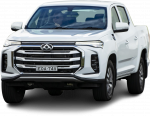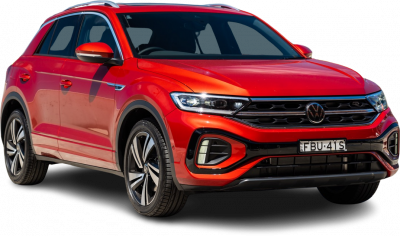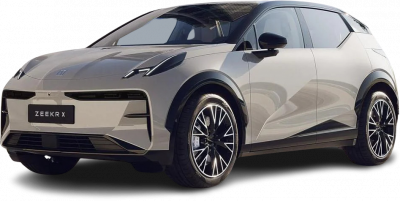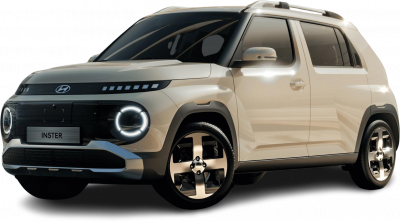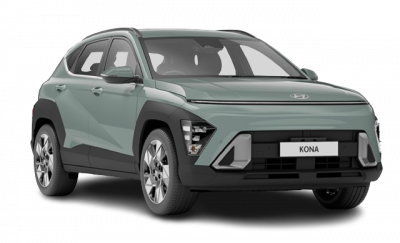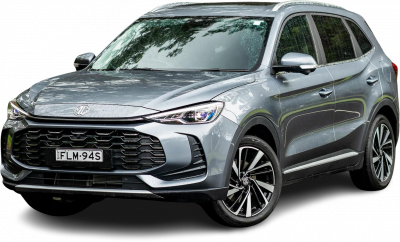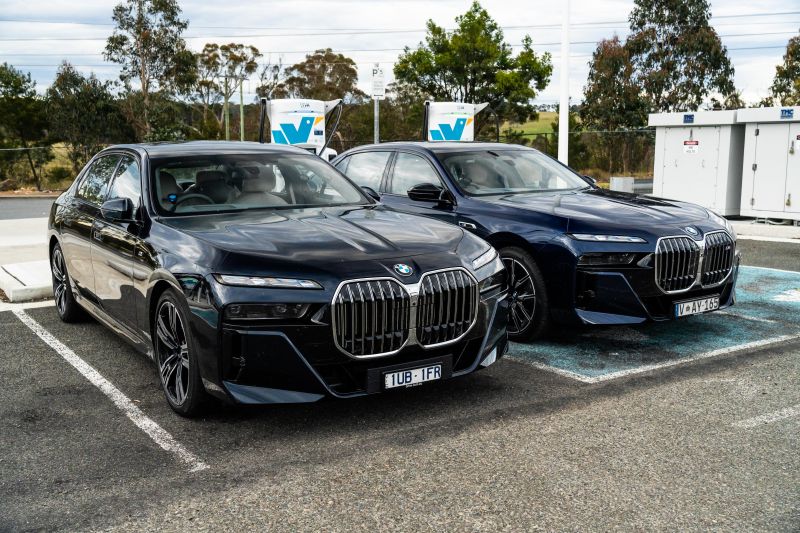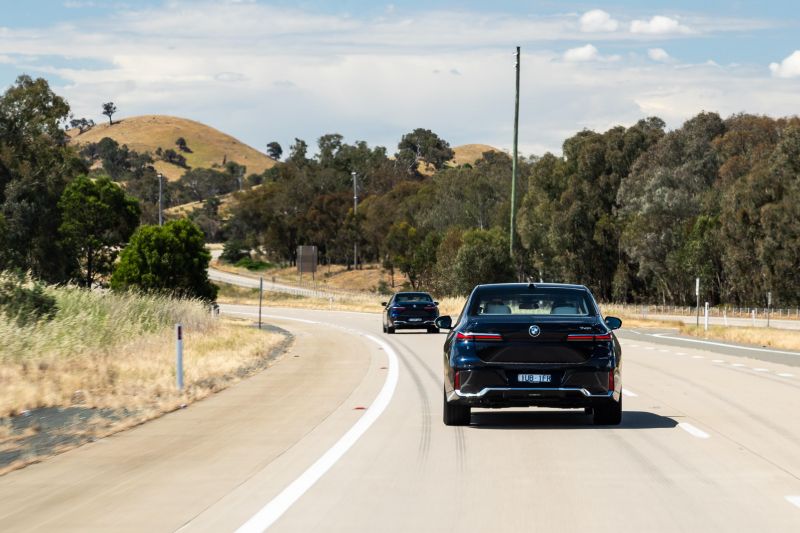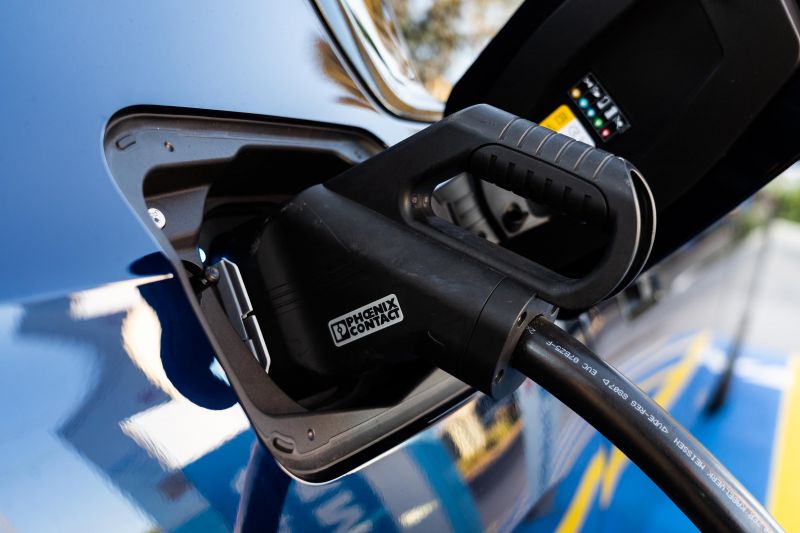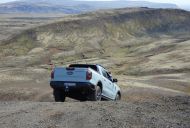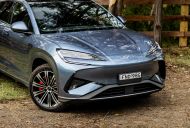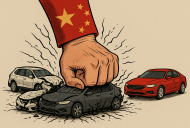You might have seen some coverage on CarExpert, YouTube, or Channel 7 this week detailing how Paul and Joe Achilles took two BMW 7 Series sedans from Melbourne to Sydney, to see whether an electric car could bring the fight to a traditional internal-combustion engine vehicle on the open road.
While Paul and Joe spent nine hours in cooled leather seats with the massage functions working at max, my video colleague Igor and I did the same trip in a Mitsubishi Outlander PHEV.
It was our camera car for the trip, but it was also a long-term production vehicle I spent a good three months driving from film shoot to film shoot.
The Outlander is comfortable, but after five hours sitting in it the fake leather seats start to become a bit stiff and hot. When the 20kWh battery depletes – which happens pretty quickly on the freeway – the fuel consumption skyrockets.
The Mitsubishi was not just there as our camera car, but also to split the difference between the petrol 740i and the fully electric i7 M70.
MORE: 900km (560 mile) electric v petrol challenge: Same cars, same driving, which was cheaper?
After the road trip was done, the details of which Paul has covered, Igor and I had to drive back to Melbourne. I was going to stick with my Outlander, but Igor was going to take the i7.
We decided we would charger hop our way back to Melbourne. This was the quickest way to do the trip and keep the thirsty 105.7kWh battery in the i7 juiced.
Our plan was simple. A quick stop in Goulburn (183km), another stop just near Wodonga (390km) then back to the office in Melbourne. Total trip time was estimated at 9 hours and 24 minutes, including a total of 62 minutes charging.
Setting off just after 8am we cruised out of Sydney without issue, making a quick stop at Pheasants Nest to get a couple of pickup shots for the video. The truck stop there is undergoing a massive renovation and once done will house nearly a dozen fast chargers. Lucky we didn’t need any here as they were all still out of order.
After stopping a couple of times to film some pieces for the video, we made it to Goulburn around 11:30am – expecting to spend around 34 minutes charging. But we found every single charger was in use, including one unfortunate BMW iX3 that wasn’t connected properly and not actually charging, and an MG ZS that was plugged into the 350kW fast-charger.
MORE: Talking about our road trip on 7News
After quickly fuelling the Outlander and ducking across the road to McDonald’s to refuel ourselves, we returned to find the iX3 owner had abandoned his charging attempt and vacated a spot. This spot however, was a slower 50kW charger.
Igor set about attempting to park the 5400mm-long barge whilst I guided him in. This may seem silly, but the i7 input is located on right hand rear panel of the vehicle, and the charger was on the left. As this was all going on, the MG owner decided to pop over and ask us about the i7.
Turns out, he was currently on his own road trip from the far south coast of NSW back to his home in Oberon. He was hopping from charger to charger and taking time to enjoy his trip.
He graciously offered to swap chargers with us (the MG has its charge port in the front grille) as he couldn’t utilise the full speed of the 350kW charger, and we could use it to its full potential.
It was now midday. We were four hours into a nine hour drive, but we had only covered what would have taken 1 hour and 45 minutes without having to charge. Back to McDonald’s.
MORE: Check out our road trip video on YouTube
By 12:30pm we were back on the road and driving into a massive thunderstorm, further slowing our progress down the Hume.
One of the benefits of spending $350k on a BMW i7 is that you get five years of complimentary Chargefox charging.
Chargefox fast chargers are situated up and down the Hume Highway; it’s what we used at the first stop in Goulburn. When we used A Better Route Planner to map the trip, we specified the BP Truck stop at Barnawatha as we knew the chargers there were Chargefox.
390km later we arrived at our next stop. I took the opportunity to refuel the Outlander while Igor went to plug the i7 in. The bowsers and the charge station are a couple of hundred meters apart, so I said I would come back to pick him up after I got petrol.
The temperature in Barnawatha was a toasty 29 degrees and the air was dead still, so I fully expected Igor to be sitting in the luxurious back seats of his i7 – but to my surprise he was standing at the charger looking extremely confused. It turns out, the Chargefox RFID card issued by BMW for the car wouldn’t work.
MORE: Optus outage hits electric car chargers
Unlike Goulburn there was no one else at this charge station, so we tried another charger, thinking it must just be residual Optus issues. Nope, no luck here either.
The charger simply wouldn’t accept the card. We tried various versions of plugging the car in, tapping the card, pressing buttons, shouting at it, pleading with it, but nothing worked. Thankfully the app did work, even if it was a paid charge rather than a free one.
The time was now 4:45pm; we had arrived shortly after 4pm.
After downloading the Chargefox app, Igor set up a profile. Then added a credit card. Then found the charger and selected it. He followed the prompts to connect the car and we were in business! Until we weren’t. Turns out that charger wasn’t connecting, so we switched back to the other fast charger and repeated the steps.
Success! The i7 was refilling its battery and we would be back on the road in about 30 minutes. We decided we had earned ourselves a Hungry Jack’s lunch, and as we chatted over a couple of Whoppers, I mentioned that I have an Evie account and a Chargefox account.
One of the aspects of our job is we spend a lot of time recharging cars after video shoots. But this got us thinking how crazy it was that we had to provide all of our details, including credit cards and home address, just to refill the car.
In all the years people have been putting petrol in their cars, it’s never been a requirement to register your personal information with a petrol station. So why do you have to do that to charge your electric car at a public charger?
Like most Australians, we had both been caught up in the various hacks that had occurred in 2023. Optus and Medibank spring to mind. I’m more data conscious than I have ever been. I think twice before plugging my personal details into a webpage and if I am shopping online, I triple check the place I’m buying from is legitimate before I hand over everything they would need to steal my identity.
Why can’t you just pull up to a fast charger, tap your card, and charge? Or, better yet, charge, walk into a building and pay a cashier, then drive away? I know this is a radical idea but surely it can’t be that hard to implement.
Eventually, we were back on the road and made it back to Melbourne just before 9:30pm. Thirteen and a half hours after we set off. And with a lot to think about.
The Hume between Sydney and Melbourne is one of the most used highways in Australia. Yet, public charging infrastructure is still scarce and at the mercy of myriad factors. They rely on a mobile phone signal to operate. They are complicated pieces of technology that have thousands of points of failure and to date, we’ve run into plenty of issues.
I love the idea of EVs being able to make the long road trips around Australia silently, and local emission free. I look forward to the day you can drive across the Outback and not have to deal with dirty petrol station bowsers, or question the quality of the fuel you are putting into the tank.
But based on this 1600km return trip we did in November of 2023, those days are still a way off. It’s no longer impossible to road trip in an electric car, but it’s harder than doing it in an internal-combustion vehicle.
If you have the time and don’t need to do long journeys in a hurry, an electric car is a great option. You can take your time, charge in country towns, stop for a few hours, and enjoy everything they have to offer. Of course, they’re also right at home around town, given most owners charge at home.
But if you, like me, generally are driving a long distance through rural Australia with the aim to get there as soon as possible, then I suggest using a car that ignites fuel in a chamber, providing drive to the wheels.
Yes, you can road trip across Australia in an electric car, but it’s bloody hard.
